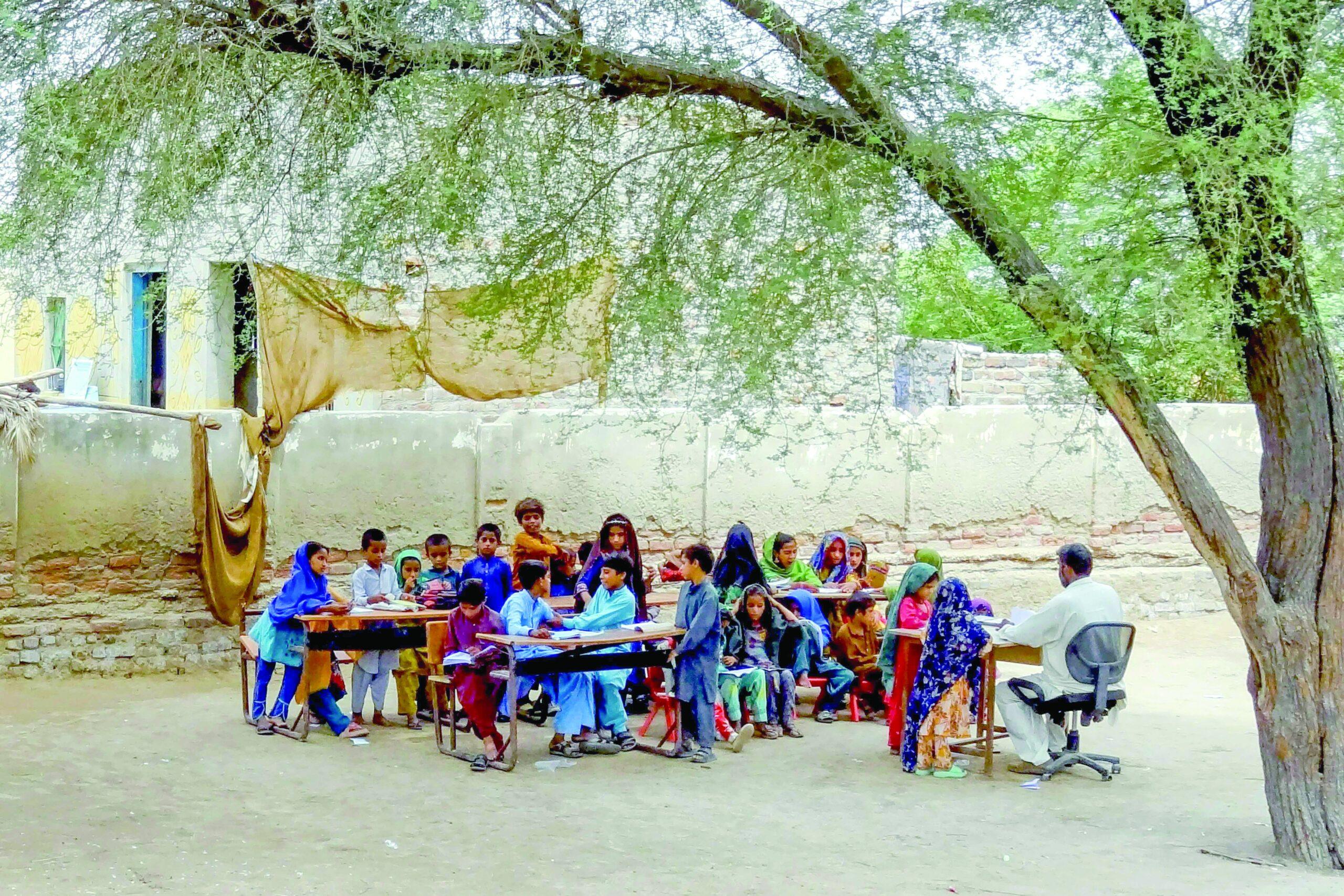Lahore:
The children of Pakistan lose weekly school closings, caused by extreme time linked to climate change every year, which has aroused calls for a radical rethink of learning hours.
Burning heat, toxic SMOG and unusual cold shots all caused closures that aim to save children’s health risks in classrooms that are often overcrowded and lack basic cooling, heating or ventilation systems.
In May, a heat wave on a national scale saw temperatures up to seven degrees Celsius above normal, reaching 45 ° C (113 degrees fahrenheit) in Punjab and inciting several provinces to cut class hours or starting summer holidays early.
“The class becomes so hot that he has the impression that we are sitting in a brick oven,” said Hafiz Ehtesham, 17, in front of a downtown Lahore school.
“I don’t even want to come to school.”
Pakistan is one of the countries most vulnerable to climate change, with limited resources for adaptation, and extreme weather conditions aggravate an existing educational crisis caused by access and poverty.
“Soon, we will have major cognitive challenges because students are affected by extreme heat and extreme SMOG over long periods,” said Baela Raza Jamil, Activist of education based in Lahore.
“The poorest are the most vulnerable. But climate change is indeed a large leveler and the urban middle class is also affected.”
Pakistan summers have historically started in June, when temperatures have reached the 1940s. But in the past five years, May has also been hot, according to the meteorological department.
“During a power failure, I was so much sweated that the drops fell from my front on my desk,” said Jannat, a student at Lahore, 15, at AFP.
“A girl from my class had heat bleeding.”
About a third of children of Pakistani school age – more than 26 million – are outside school, according to government figures, one of the largest numbers in the world.
And 65% of children cannot read the equipment adapted to age at the age of 10.
School closings affect almost all parts of Pakistan, including the most populous province in the country, Punjab, which has the highest school attendance rates.
The lessons closed for two weeks in November for air pollution, and another week in May due to heat. During the previous school year, three weeks were lost in January for a snap in cold and two weeks in May due to the heat.
Political troubles and cricket matches that closed the roads meant more lost days.
In Balutchistan, Pakistan’s poorest province, May Heatwaves caused a vacation at the start of the summer for three years, while in the northwest of the province of Khyber-Pakhtunkhwa, class hours are regularly reduced.
For the authorities, the choice is often between sending children to school in potentially dangerous conditions or watching them are late.
In the southern Sindh province, the authorities resisted heat -related closures despite the growing requests of parents.
“It is difficult for parents to send their children to school in this kind of time,” the director of the private school Sadiq Hussain told AFP, adding that attendance drops by 25% in May.
“Their physical and mental health is affected,” added Dost Mohammad Danish, secretary general of all private schools and Sindh colleges.
“Do not expect better scientists from Pakistan in the coming years.”
Schools in Pakistan are supervised by the provincial authorities, whose closing opinions apply to all schools in a region, even when hundreds of separate kilometers (miles) can know different conditions, or have different resources to cope.
Teachers, parents and educational experts want to rethink school hours, examination schedules and holidays, with schools capable of offering Saturday lessons or dividing the school day to avoid noon heat.
Izza Farrakh, a specialist in senior education at the World Bank, said that the impacts related to climate change affect the results of attendance and learning.
“Schools must have flexibility to determine their academic calendar. It should not be centralized,” she said, adding that the end-of-year exams generally passed in May could be replaced by regular assessments throughout the year.
The adaptation of school buildings is also crucial.
International development agencies have already equipped thousands of schools with solar panels, but many more than 250,000 schools in the country need help.
Hundreds of climate resilient schools funded by World Bank loans are built in the Sindh. They are raised to withstand monsoon floods and equipped with solar panels for energy insulation and roof to combat heat and cold.




